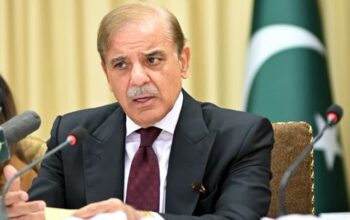By Staff Reporter
ISLAMABAD: Pakistan’s highest electricity tariffs in the region have prompted the country’s top business chamber to seek a Supreme Court-ordered forensic audit of independent power producers (IPPs), amid allegations of excess payments and sector irregularities.
“In the light of the foregoing, it is respectfully prayed that this Honourable Court may be graciously pleased to direct the Government of Pakistan to commission a detailed and thorough forensic audit of all IPPs,” the The Federation of Pakistan Chambers of Commerce and Industry (FPCCI) prayed in its petition.
The move comes as protests erupt in Rawalpindi and Karachi, with demonstrators calling for a review of Pakistan’s loss-making agreements with IPPs, reduced power tariffs, and the revocation of additional taxes introduced in the last budget.
Pakistan has the highest electricity tariffs in the region, with the government set to pay Rs2.1 trillion to IPPs in capacity payments this fiscal year, while circular debt for the energy sector has ballooned to Rs5.422 trillion.
All IPP contracts for the sale of electricity are structured in two tiers. First, the power purchaser is required to make “capacity payments,” which are required to cover all fixed costs of the IPPs, including debt repayments as well as Operations and Management costs (O&M Costs) and return on equity (RoE) at a stipulated rate, according to the FPCCI.
These capacity payments are to be made by the power purchaser whether or not any electricity is actually purchased. In addition to capacity payments, there is a variable cost attributable to the production of energy above a certain plant capacity factor (normally 60 percent). In other words, if more than 60 percent of a plant’s capacity is utilized for electricity generation, then the relevant IPP is entitled to additional payments. Fuel cost is treated as a pass-through item.
The FPCCI cited a 2020 report identifying over 100 billion rupees in excess payments to IPPs and recommended a forensic audit and recovery of prior excess payments.
“No such audit has been conducted nor have any prior excess payments been recovered,” the FPCCI said. “Pakistan’s power sector is a paradigmatic example of regulatory capture, where year after year the people of Pakistan continue to suffer at the hands of predatory elites.”
The current situation is imposing an “unbearable burden” on domestic consumers and forcing industries to either go off-grid or shut down, as the government seeks to recover increasingly higher tariffs from a dwindling customer base, the FPCCI said.
Pakistan’s perennial economic crisis is largely attributed to its electricity sector, with the country poised to pay approximately Rs3.58 trillion to electricity generating companies this year. Only Rs2.63 trillion is expected to be recovered, with the remaining amount to be subsidized by the government, adding to the existing circular debt of Rs5.422 trillion.
The country’s installed power generation capacity stands at 45,885MW, with state-owned entities accounting for 52 percent and IPPs for 48 percent. Notably, maximum power demand during summers is around 30,000MW, while winter peak loads are approximately 12,000MW, indicating a significant surplus.
Despite the current oversupply, IPPs are scheduled to add 7,460MW of electricity by 2032, in addition to the 11,550MW to be added through government projects, the FPCCI said.
“It is estimated that during the current financial year (i.e. 2024 – 2025), capacity payments will total Rs2.1 trillion (equal to about 1.9 percent of GDP). In FY 2023-24, 45 percent of capacity payments were made to the government-owned plants, 15 percent to private parties (mostly local) and 40 percent to IPPs set up under CPEC (China-Pakistan Economic Corridor),” it added.
“Notwithstanding the trillions being paid as capacity charges to the IPPs, actual capacity utilization of the IPPs is very low. In some cases, IPPs are getting paid billions in capacity charges without generating a single unit.”
Copyright © 2021 Independent Pakistan | All rights reserved




